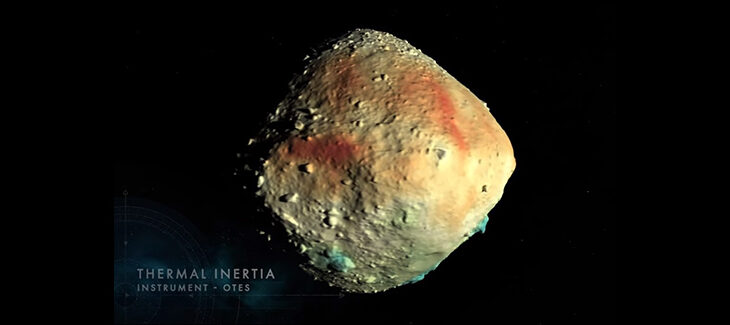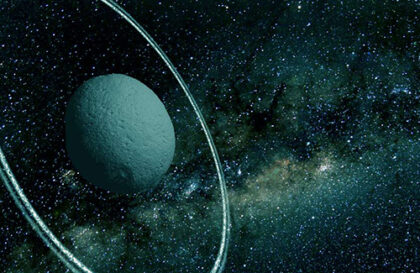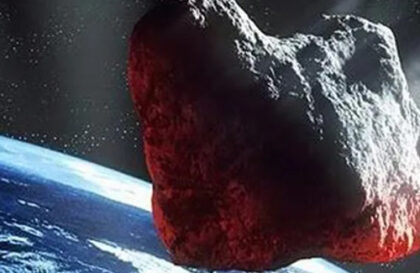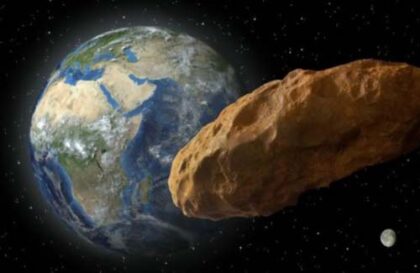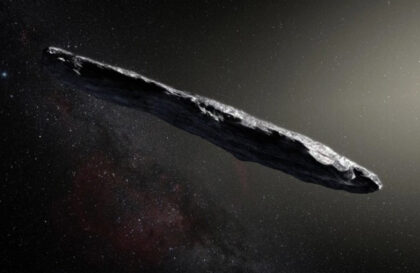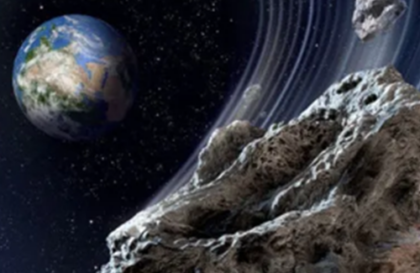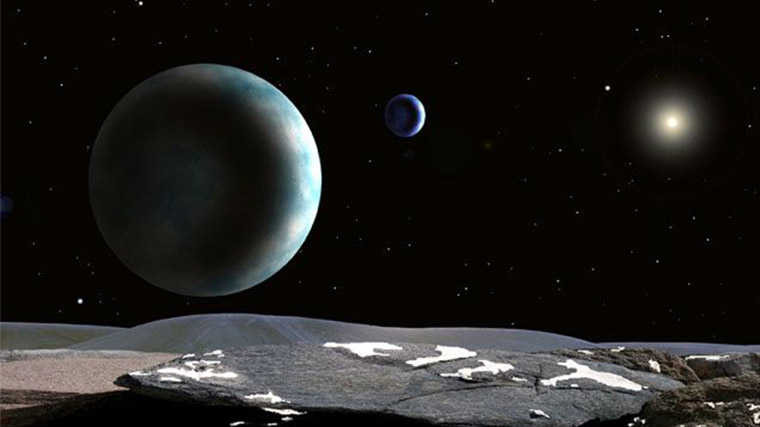What is Bennu?
Bennu was discovered in 1999 using the LINEAR telescope in New Mexico. Although it is also known as 1999 RQ36 or asteroid 101955, the name Bennu was chosen through a 2013 competition hosted by the University of Arizona. High school student Mike Puzio suggested the name, noting that the spaceship’s design reminded him of the heron god from Egyptian mythology. This bird is associated with Osiris, symbolizing the role of asteroids as destroyers and givers of life on Earth.
Bennu is 1,614 feet (492 meters) long and has a top-like shape. The asteroid orbits the Sun in 435 days and approaches Earth every 6 years, being closer to it than the Moon, at a distance of about 186,000 miles (300,000 km). Bennu makes a full rotation on its axis in 4.3 hours.
How did Bennu end up being our neighbor?
Bennu, a carbon-rich asteroid, likely contains organic matter as old as the solar system itself. Scientists hope that they will reveal to us the mystery of the origin of life on Earth.
Typically, such cosmic bodies are located in the distant part of the asteroid belt between Mars and Jupiter. However, Bennu came closer to us due to the Yarkovsky effect, which is due to the impact (push) of sunlight on its carbon content. It is believed that Bennu was once part of a giant asteroid, up to 130 miles (200 km) wide, from which it separated after colliding with another space object 700 million to 2 billion years ago. The primordial body has maintained its pristine state since the birth of the solar system, and Bennu inherited this historical chronicle, providing scientists with the opportunity to study it.
This asteroid orbits the Sun every 436 days and approaches Earth every six years.
Bennu’s unexpectedly loose surface
Credits: NASA’s Goddard Space Flight Center
The bennu formed after the impact is not a cohesive block of rock, but a loose pile of rocks and gravel held together by weak gravity. When OSIRIS-REx arrived at the asteroid, it found its boulder-strewn surface to be very different from what scientists had predicted. During a 2020 sampling attempt at Nightingale Crater, the probe was nearly engulfed by soft asteroid material that behaved more like a liquid than a solid.
This behavior of the asteroid may explain the absence of the expected number of craters on its surface, despite collisions with meteorites. Instead of leaving marks, the Bennu’s soft surface seems to absorb most impacts like rubber.
Although Bennu serves as a kind of “black box” for studying the past of the solar system, its surface does not stand still, but is constantly updated due to collisions that leave their mark on the asteroid over and over again. But these traces do not last forever: they are erased every few million years.
When OSIRIS-Rex landed on the asteroid’s surface, it created a hole the size of a small house (26 feet or 8 m wide), indicating how easily Bennu’s surface is susceptible to external influences.
However, collisions are not the only reasons for changes in the surface of an asteroid. An examination of Bennu revealed that it was riddled with cracks, presumably caused by intense solar radiation. These relatively “young” damages show that asteroids are subject to much greater wear and tear than space bodies protected by an atmosphere, such as the Earth.
Danger to Earth from Bennu
Asteroid Bennu is a potentially hazardous near-Earth asteroid that was studied by NASA’s OSIRIS-REx mission from 2018 to 2021. Bennu orbits the Sun at a speed of 101,388 km/h. It approaches the Earth at a distance closer than the Moon every six years.
This graphic is via DSLauretta
Despite the fact that Bennu is on the list of potential threats to Earth, the real danger of its collision with our planet is very small. According to NASA, approximately 1 in 1750 until 2300. However, it is precisely because of this probability that the study of this asteroid is extremely important. Knowledge about Bennu’s motion, shape and other features will help scientists better understand the movements and possible trajectories of other potentially hazardous asteroids.
Bennu, a 1,614-foot (492-meter) wide asteroid, could cause destruction if it collided with Earth. Such a blow would not lead to a mass extinction, but its effects would be felt over a large area. If Bennu fell in the United States, the airwave would destroy buildings in several states. Bennu’s impact crater will be nearly 4 miles (6.4 km) wide. This is what calculations from Imperial College London show.
In the event of a collision threat, NASA already has experience changing the trajectory of asteroids, as demonstrated by the DART mission in 2022. On September 26, the spacecraft as part of the DART mission successfully collided with the asteroid Dimorphos, the purpose of which was to adjust its orbit. The results of the operation exceeded expectations: On October 11, 2022, NASA confirmed that Dimorphos’ orbit had decreased by an impressive 32 minutes, or almost 12 hours.
Why did OSIRIS-REx visit Bennu?
Credit: NASA
Bennu is one of the near-Earth asteroids, located within 120 million miles (190 million km) of Earth. Its orbit is well studied, and its size of up to 1,650 feet (500 m) makes it interesting to study: smaller asteroids spin too quickly for safe visitation. Only a few asteroids in their respective orbits were large enough to be visited.
Bennu is rich in carbonaceous material, reminiscent of asteroids that could have brought water and organic compounds to Earth. This distinguishes him from the other 200 candidates.
Banner image: NASA’s Goddard Space Flight Center
Image credit:
https://www.nasa.gov
https://www.nasa.gov
https://earthsky.org
https://metroamericas.com
